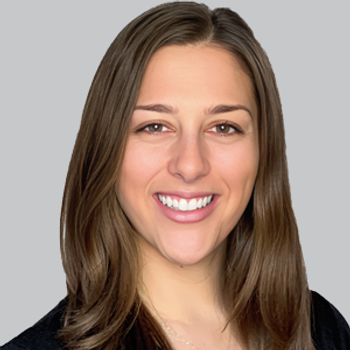
Pediatric Narcolepsy Severity Scale Shows Promise as a Clinical Tool
The original Narcolepsy Severity Scale was reformulated with the driving-related item removed to assess a pediatric version for the school-aged and adolescent narcolepsy type 1 population.
A recent assessment has determined that newly developed version of the Narcolepsy Severity Scale, dubbed the pediatric Narcolepsy Severity Scale (NSS-P), appears to be a useful clinical tool associated with self-reported sleepiness, insomnia, and depressive symptoms among school-aged children and adolescents with narcolepsy type 1 (NT1).1
All told, the NSS-P demonstrated adequate psychometric properties with significant correlations to the item-total score. Additionally, specific factor analysis indicated that the scale offered a 4-factor solution with good reliability. Those individuals who were treated for NT1 (n = 92) reported lower NSS-P scores than those who were untreated (n = 68), with a mean difference of 3.71 points (±1.45) and a minimal clinically important difference estimated at 4 points.
The evaluation included 209 children and adolescents (age range, 6-17 years) and was conducted by Yves Dauvilliers, MD, PhD, professor of neurology, and director, Sleep Disorders Centre, Gui de Chauliac Hospital, Montpellier, and colleagues. The group sought to assess the NSS-P for its psychometric properties, validity, and reliability; and to evaluate its responsiveness to treatment in a well-characterized sample of children and adolescents with NT1. All participants included were diagnosed in 3 Reference Centers for Narcolepsy in France and were consecutively asked to fill in the NSS-P. In total, 160 (age range, 10-18 years) individuals completed the NSS-P.
“This scale constitutes a relevant tool to improve and provide guidance for NT1 management in pediatric populations. The ease of administration, its good psychometric properties, and its sensitivity to detect symptom changes after treatment ensure NSS-P future use in clinical and research settings,” Dauvilliers told NeurologyLive.
READ MORE:
The study utilized 4 clinically relevant severity score ranges in an effort to validate the scale. The 4 severity levels were defined as mild, moderate, severe, and very severe; there were also defined between-group differences related to treatment. In addition to NSS-P total score’s association with a number of measures, its temporal stability was deemed satisfactory by Dauvilliers and colleagues.
In order to conduct the study, the original NSS was reformulated with the driving-related item removed due to a lack of relevance to the pediatric population. In total, the score of the 14-item NSS-P ranges from 0 to 54, with higher scores reflecting more severe disease. The investigators had 65 participants complete the scale twice (33 before/during treatment and 32 under the same treatment). The NSS-P psychometric properties, score changes before/during treatment, and convergent validity with other clinical parameters were assessed by the group.
Attempts to develop novel and improved measures in narcolepsy care have been a paralleled effort with therapeutic development in the last year or so, with a focus on standardization, and a recent effort from the
Those data revealed that Sleep logs were used by 57% and actigraphy by 54% of the 146 practitioners in 37 countries who were respondents. Most practitioners reported using nocturnal polysomnography (PSG; 95%) and multiple sleep latency test, while only 39% use the maintenance of wakefulness test (MWT) although over 50% of participants in Europe and Oceania reported use of MWT. Most of the survey participants were neurologists (38%) and pulmonologists (21%); 10% were psychiatrists, 10% were various pediatric specialties, and less than 6% were internists, otolaryngologists, or psychologists. Fifteen percent reported their specialty as sleep medicine and these participants were mostly (59%) from North America.2
Recently, key opinion leaders in narcolepsy care Phyllis C. Zee, MD, PhD, and Alon Avidan, MD, MPH, discussed the impact of the COVID-19 pandemic on the diagnosis and treatment of narcolepsy and comment on improvements in symptom management at home in a segment of the NeurologyLive Peers & Perspectives series, “Treating Narcolepsy and Excessive Daytime Sleepiness.” Watch the pair address a number of concerns from the physician community in the video below.
REFERENCES
1. Barateau L, Lcendreux M, Chenini S, et al. Measurement of Narcolepsy Symptoms in School-Aged Children and Adolescents: The Pediatric Narcolepsy Severity Scale. Neurology. Published online May 24, 2021. doi: 10.1212/WNL.0000000000012272.
2. Rosenthal L, Thorpy MJ, Nevsimalova S, Mayer G, Han F, Dauviliers Y. 2018 worldwide survey of health-care providers caring for patients with narcolepsy: WSS narcolepsy task force. Sleep Med. 2021:82:23-28. doi: 10.1016/j.sleep.2021.03.014
Newsletter
Keep your finger on the pulse of neurology—subscribe to NeurologyLive for expert interviews, new data, and breakthrough treatment updates.




































